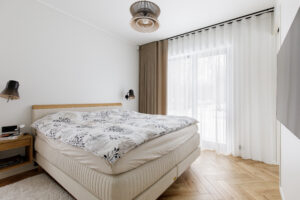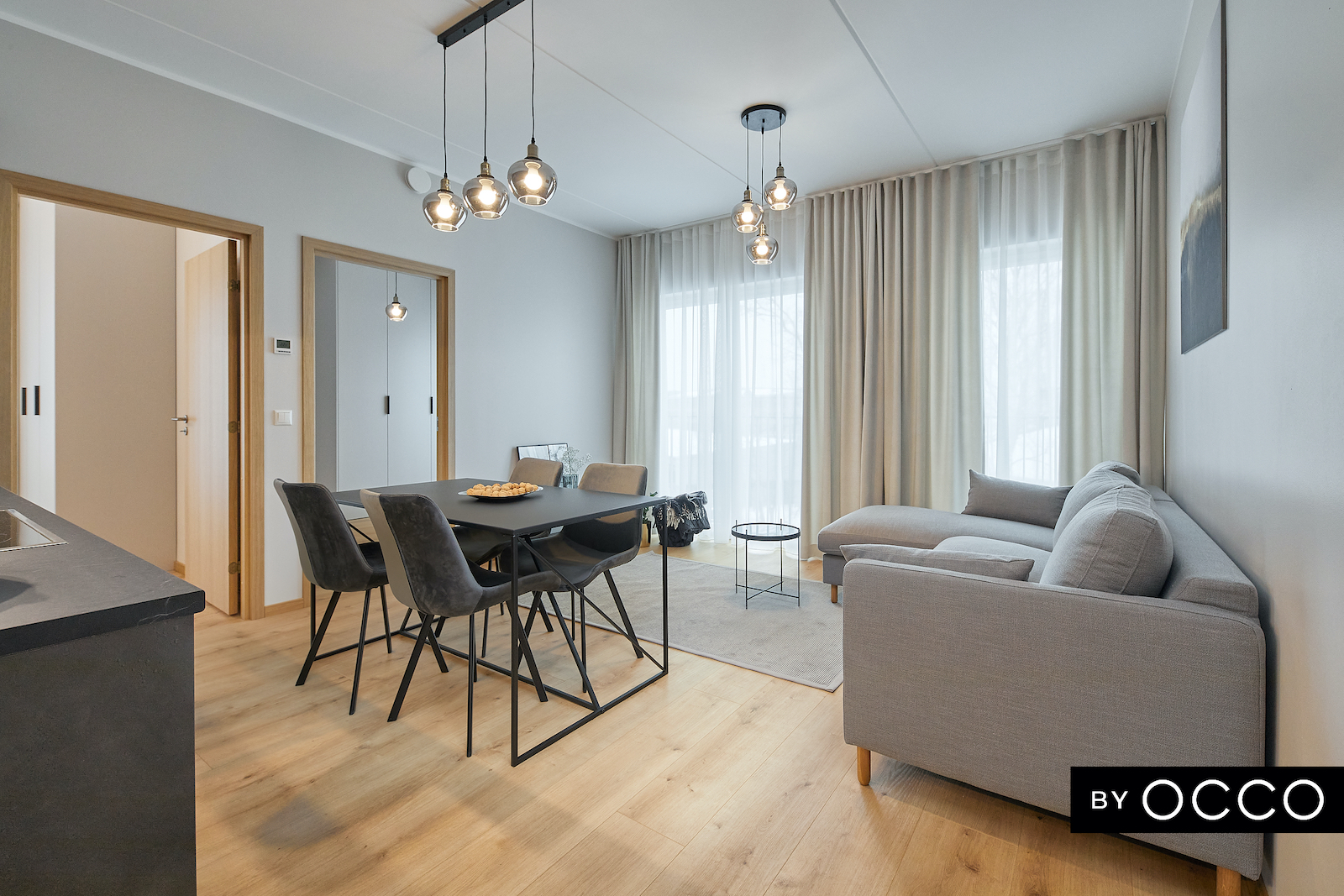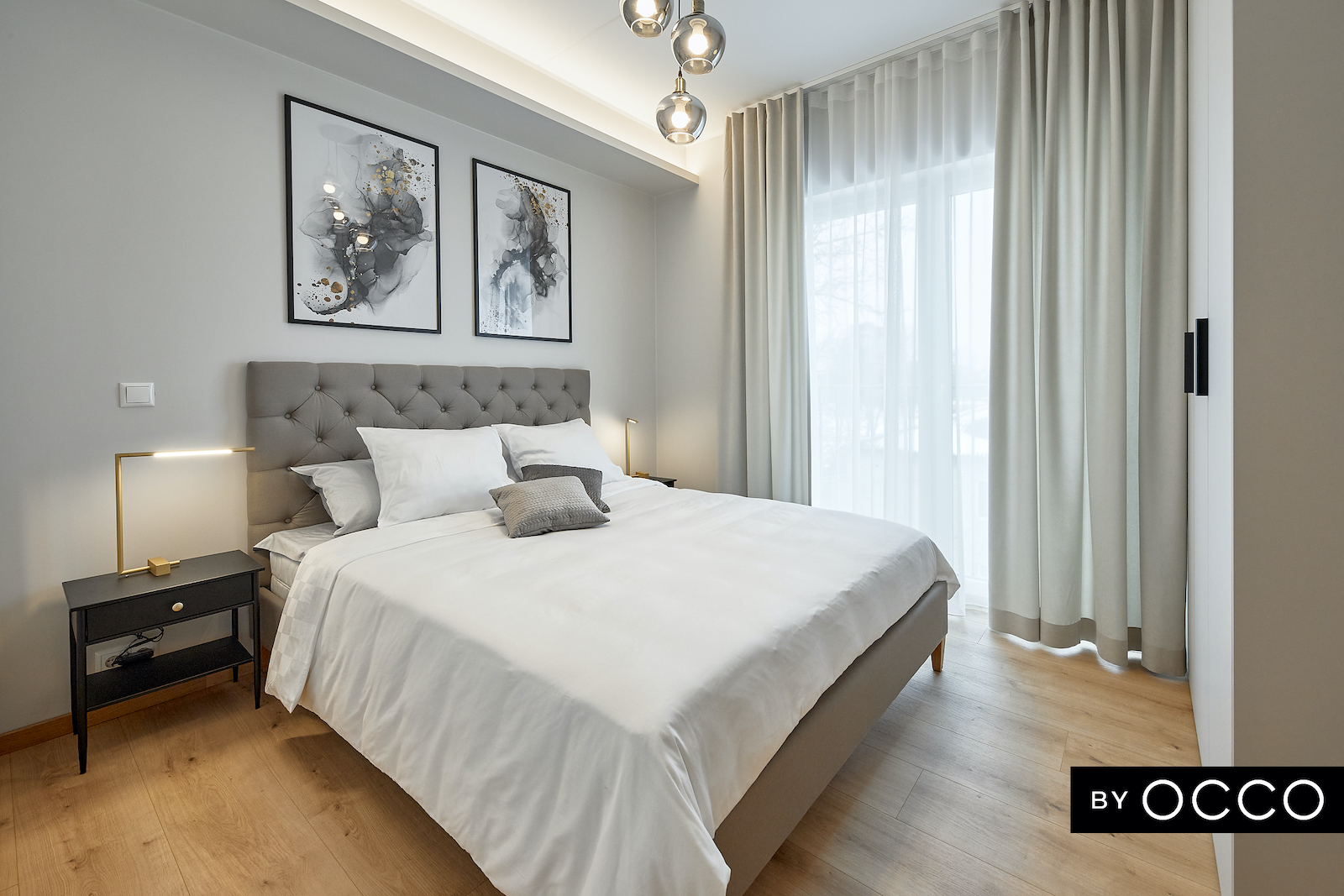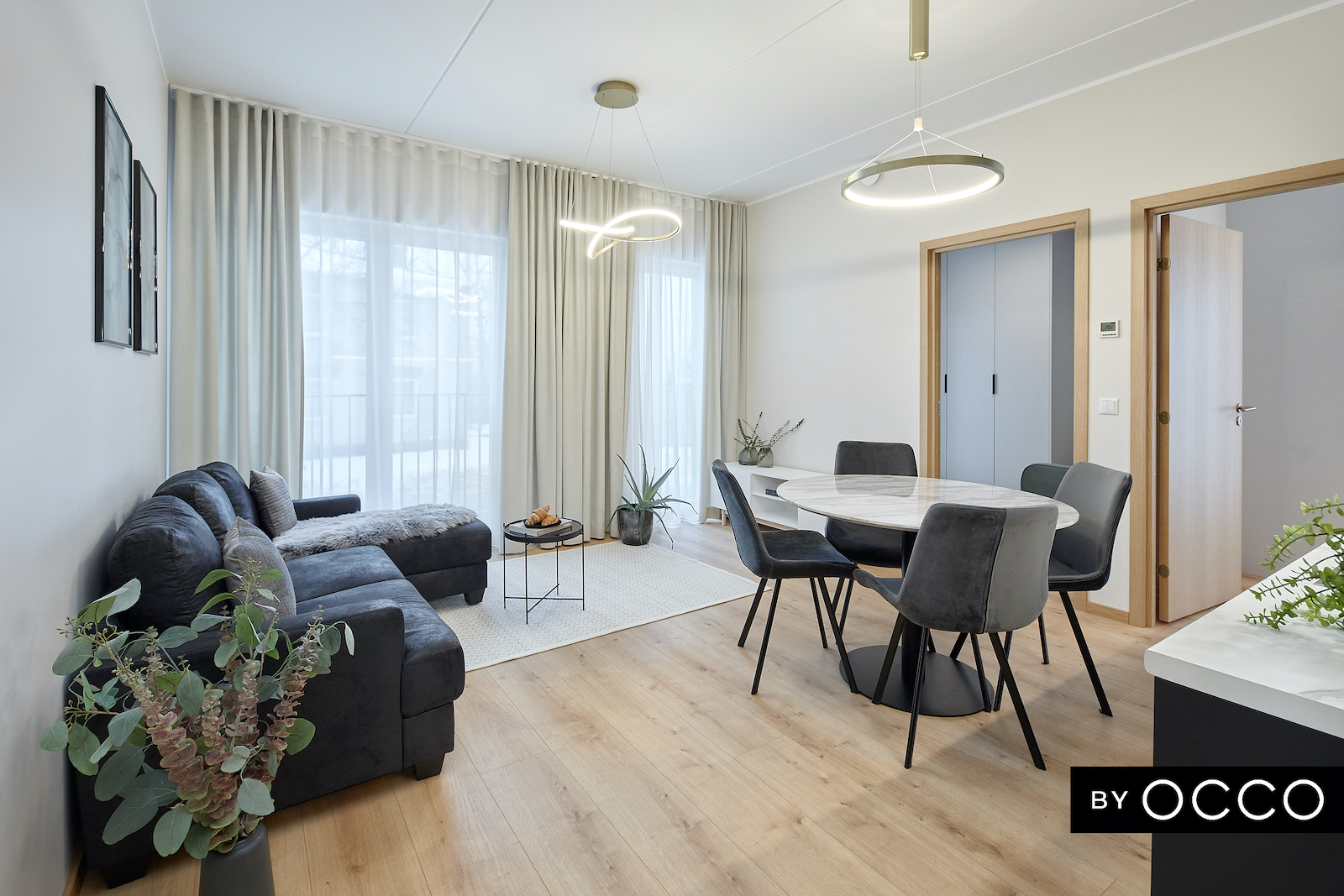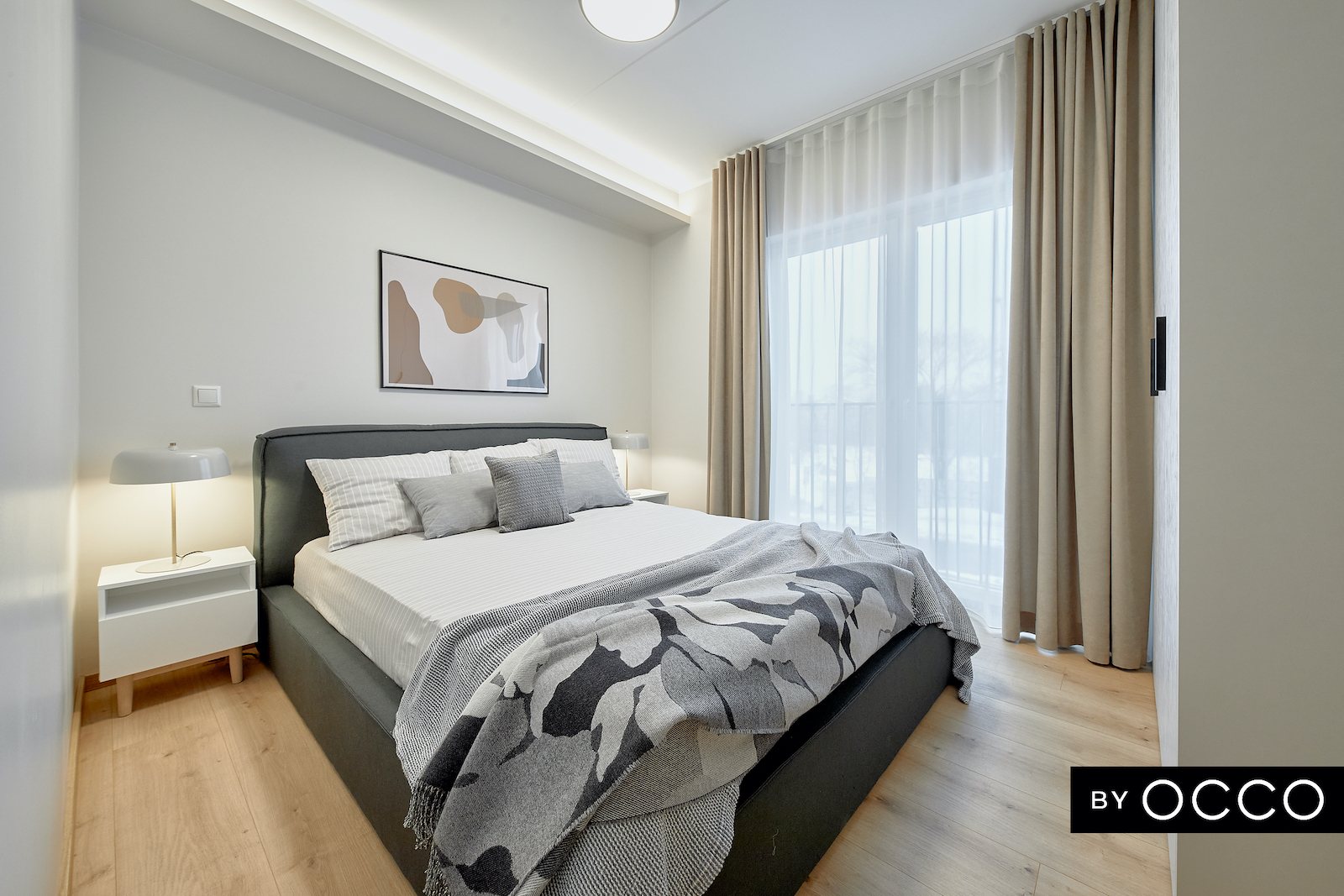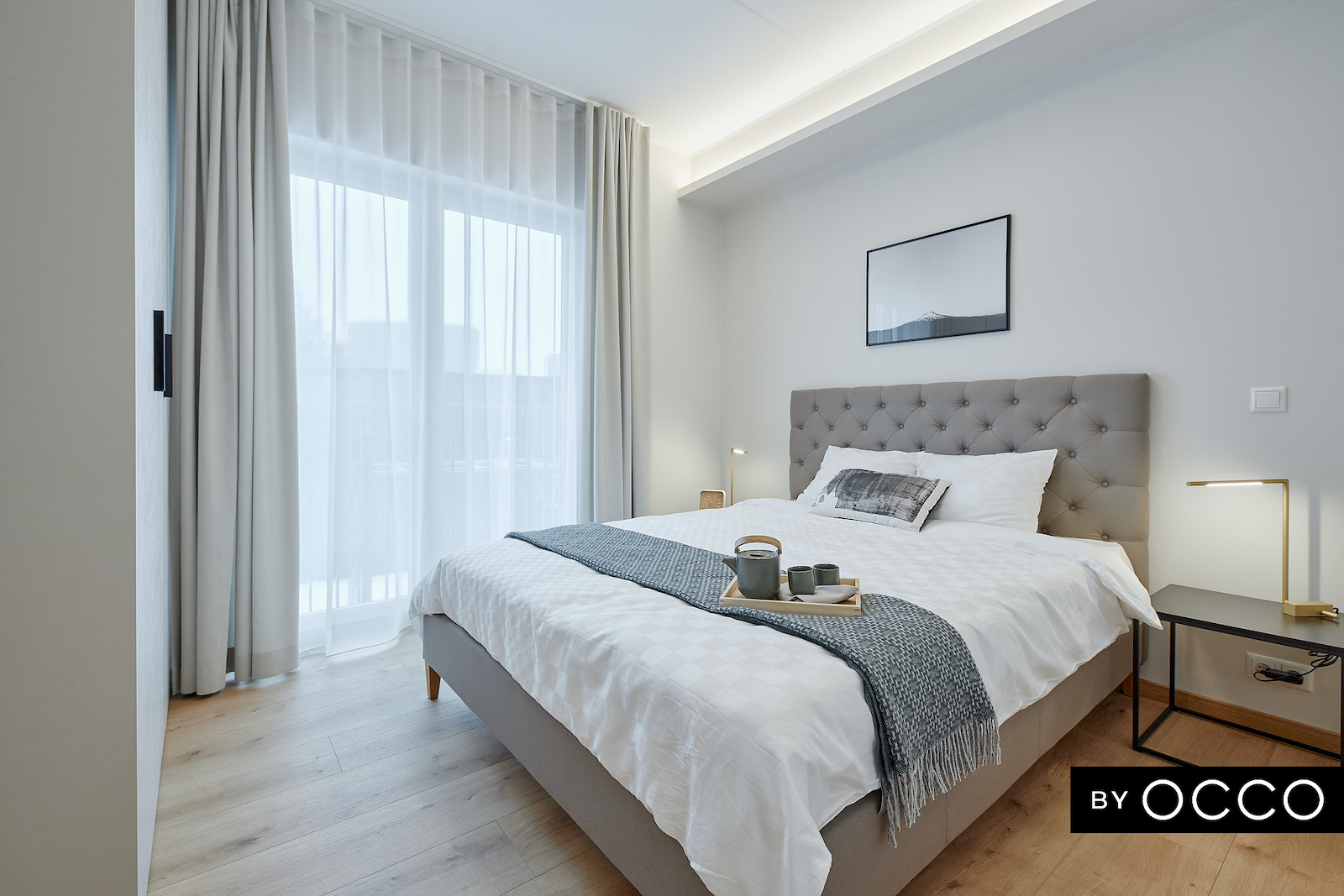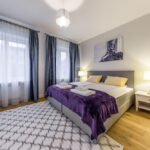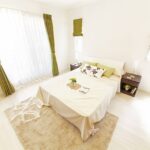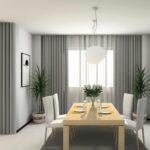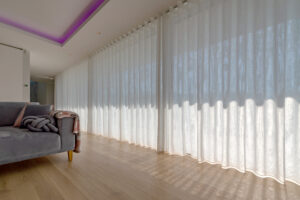Why choose textile curtains?
Wide range of styles and materials
Thanks to ongoing innovation, curtain fabrics have become increasingly technical and durable. Each season brings new collections suitable for both classic and modern interiors.
Suitable for homes and offices
Textile curtains have also established a strong presence in public and commercial spaces, valued for their ease of maintenance and functionality. Many fabrics meet fire-resistance or flame-retardant standards, making them a suitable choice for public areas as well.
Decorative and practical in one
The design of the curtain and the beauty of the fabric are as important as their functionality. Properly chosen textile curtains create a warm and cohesive atmosphere while regulating light and ensuring privacy.
More than just beautiful – textile curtains as functional interior elements
In addition to adding personality and visual accents to a room, textile curtains serve important practical roles, such as:
-
Light and temperature regulation
Blackout-lined curtains allow for restful sleep even during daylight hours, while heavy, dense fabrics help reduce cold drafts from windows.
Light and airy fabrics bring more brightness and openness to smaller or darker spaces. -
Layered curtain combinations
Textile curtains can be effectively combined with other window coverings to achieve both aesthetic and functional balance.
Examples:
– A roller blind combined with a sheer curtain provides privacy while controlling light.
– A Roman blind with matching side panels creates a unified frame during the day and a complete solution when closed at night.
Timeless simplicity and the beauty of materials
While there are many options available, modern interior design favors simple forms and high-quality materials that allow the fabric itself to stand out.
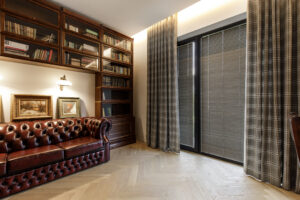
Types of textile curtains – find the perfect solution for every room
Textile curtains offer a wide variety of styles and functionalities, allowing you to create the ideal mood and light control for your space. Here’s an overview of the main types of curtains:
Sheer curtains
Made from light and semi-transparent materials, sheer curtains provide daytime privacy while allowing natural light to filter through and maintaining the view outside. At night, they require additional coverage—such as roller blinds, pleated blinds, or side panels—to ensure privacy.
Side panels
The most versatile type of textile curtain, available with various attachments and finishes:
-
Curtain tapes (pleats)
-
Eyelets (suitable for curtain rods, durable and decorative)
-
Hanging loops
-
Decorative ribbons and tassels
Side panels can be lined or unlined, depending on the desired light transmission and thermal insulation.
Top treatments
Draped or straight fabric tops are designed to conceal the curtain track or serve as a decorative accent. Often used with Roman blinds or technical window coverings, they add softness and classical elegance to a room. They can also be free-form valances.
Fabric Roman blinds
Roman blinds combine technical functionality with the softness of fabric. When raised, the blinds form elegant folds, creating a refined and polished appearance.
-
Available with cord, chain, or motorized operation
-
Suitable for both thin and thicker fabrics, especially cotton
-
Includes Austrian and French-style curtains with lush folds, built on the Roman blind mechanism
Fabric panel curtains
Geometric and minimalist in design, panel curtains work well in public spaces or modern interiors. They are ideal for showcasing large-patterned or textured fabrics. Panel curtains move along tracks and can also serve as room dividers.
Each curtain type offers unique advantages—whether your goal is light control, privacy, decorative appeal, or a combination of all three. At Avaeksperdid showrooms, our specialists will help you find the solution that best suits your space.
